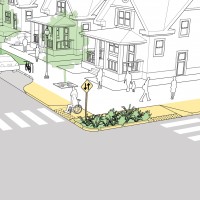What the heck is the 85th Percentile Rule?
We recently had a meeting in Asbury Park about the problem of speeding, and slowing drivers on our streets, a proposed traffic calming measure, specifically mini roundabouts, and how speed limits are determined.
Our Transportation Manager attempted to explain to the attendees what the 85th Percentile Rule is as they questioned why we can’t change speed limit signs. We just can’t. Or at least not without great difficulty.
In simple terms it’s an engineering calculation that the speed limit is determined by the actual speed that people drive. It’s hopefully soon-to-be edited Manual For Urban Traffic Control Devices, MUCTD.
The 85th Percentile Rule is horrible. It’s not about safety.
Hear me? IT’S NOT ABOUT SAFETY. IT’S NOT ABOUT SLOWING DRIVERS.
It’s about expediting the movement of vehicles.
Here’s a simple, short video with great graphics with Transportation 4 America director Beth Osborne, who joined Wall Street Journal correspondent George Downs to explain why one controversial method for setting speed limits results in higher and higher speeds.
It’s also clearly explained in the excellent site for National Association of City Transportation Officials, NACTO. These folks get it.
The crazy thing is that traffic engineers and planning people don’t seem to speak the same language.
We have city planners who are hamstrung by these regulations, but we can get around them with creative solutions to #slowthecars like mini-roundabouts, speed humps, street narrowing…and we have the grant money do do it.
Let’s get on the same page about saving lives and saving the planet.
Onward.











 C
C
